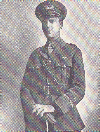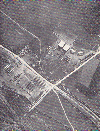



History - World War I (3)

where it stayed until the 15th. Then, re-equipped, it m oved to Fumes for further operations. The new role was to provide fighter patrols, to attack enemy threatening Dunkirk, shoot down kite balloons, recce train movem
oved to Fumes for further operations. The new role was to provide fighter patrols, to attack enemy threatening Dunkirk, shoot down kite balloons, recce train movem ents around Ostend, escort French photographic aircraft and protect the French artillery machines. In this role the Squadron converted to Sopwith Triplanes. The start of work at Fumes was most inauspicious. As if delays caused by the weather were not enough two machines were damaged at Auchel because the wind indicator was wrongly laid out; another pilot crashed on take off; and a fourth crashed on a forced landing having become lost near the lines. Small crashes were an everyday event as pilots had not yet got used to the new Triplanes. However on April 5th the bad weather broke, and operations started in earnest with preparations for the Vimy Ridge assault during the early hours of April 9th. The class of the Sopwith Triplane is illustrated by the following account of Flight Lieutenant Little’s escapades: “At 6.45pm on 7/4/1917,
ents around Ostend, escort French photographic aircraft and protect the French artillery machines. In this role the Squadron converted to Sopwith Triplanes. The start of work at Fumes was most inauspicious. As if delays caused by the weather were not enough two machines were damaged at Auchel because the wind indicator was wrongly laid out; another pilot crashed on take off; and a fourth crashed on a forced landing having become lost near the lines. Small crashes were an everyday event as pilots had not yet got used to the new Triplanes. However on April 5th the bad weather broke, and operations started in earnest with preparations for the Vimy Ridge assault during the early hours of April 9th. The class of the Sopwith Triplane is illustrated by the following account of Flight Lieutenant Little’s escapades: “At 6.45pm on 7/4/1917,


a Sopw ith Triplane, working alone, attacked eleven hostile machines, almost all “Albatross” Scouts, N.E. of Arras. He completely out-classed the whole patrol of hostile machines, diving through them and climbing above them. One “Albatross” Scout, painted red, which had been particularly noticed by this Section, dived onto him and passed him. The Sopwith dived on him and then easily climbed again above the whole patrol, drawing them all the time towards the Anti-Aircraft guns. As soon as they were within range, the Anti-Aircraft guns opened fire on the patrol which turned eastward, and the Sopwith returned safely. The officers who witnessed the combat report that the manoeuvring of the Sopwith Triplane completely outclassed that of the “Albatross Scout”. During the time
ith Triplane, working alone, attacked eleven hostile machines, almost all “Albatross” Scouts, N.E. of Arras. He completely out-classed the whole patrol of hostile machines, diving through them and climbing above them. One “Albatross” Scout, painted red, which had been particularly noticed by this Section, dived onto him and passed him. The Sopwith dived on him and then easily climbed again above the whole patrol, drawing them all the time towards the Anti-Aircraft guns. As soon as they were within range, the Anti-Aircraft guns opened fire on the patrol which turned eastward, and the Sopwith returned safely. The officers who witnessed the combat report that the manoeuvring of the Sopwith Triplane completely outclassed that of the “Albatross Scout”. During the time  of the main push one of the main tasks allotted to the Squadron was escort duty in protection of No. 25 Squadron’s recce machines. The Squadron Commander remarked that despite the unpopularity of this type of work the two Squadrons got on very well together. By April 20th the activity was much less and the advance was so successful that it was decided to move the Squadron further forward. Squadron Commander Bromet, accompanied by OC 10th Wing, Wing Commander Wilfred Freeman, went in search of a new base. They found one at Mont St. Eloi which, after being used as a forward strip for a time, was converted into a
of the main push one of the main tasks allotted to the Squadron was escort duty in protection of No. 25 Squadron’s recce machines. The Squadron Commander remarked that despite the unpopularity of this type of work the two Squadrons got on very well together. By April 20th the activity was much less and the advance was so successful that it was decided to move the Squadron further forward. Squadron Commander Bromet, accompanied by OC 10th Wing, Wing Commander Wilfred Freeman, went in search of a new base. They found one at Mont St. Eloi which, after being used as a forward strip for a time, was converted into a































